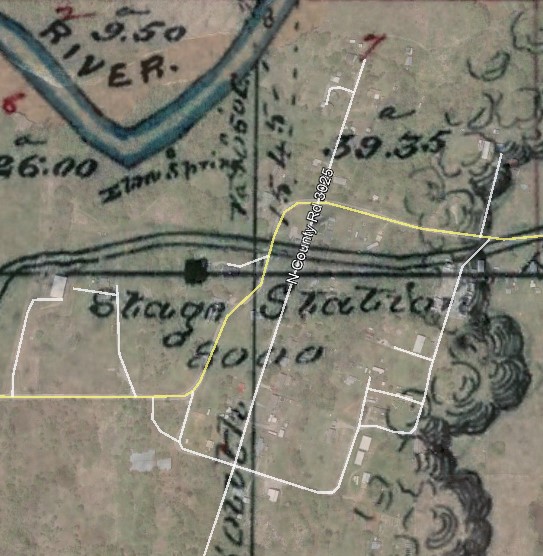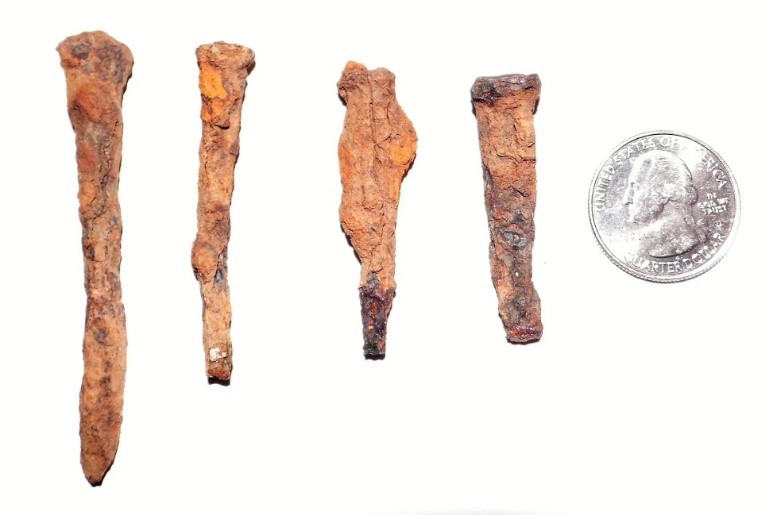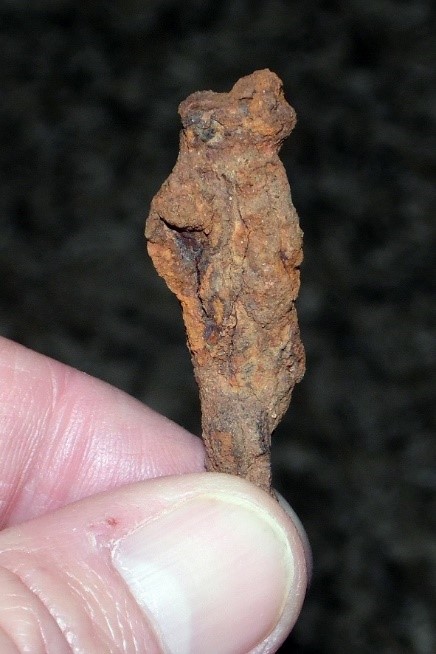
At Elm Springs in 1871 there was little sign of the historically important village of Erin Springs that would soon take root there. Only two structures were likely located near the ancient springs that year. One, we know for sure, was the newly constructed Elm Springs stage station, probably built at the Springs in 1870 and shown on the survey plat. The other structure was likely the abandoned Cloud Ranch House, which is not shown on the plat.
Geographical coordinates for the 1871 Elm Springs Stage Station obtained through geo-referencing placed the structure approximately 20 yards southwest of the old carriage house that continues to stand west of the Murray-Lindsay mansion. The area was examined during this study to determine if any trace of the first stage stand still existed.
Since the Murray homestead was a working farm and ranch operation well into the 1900s and was home to a number of Murray relatives long after the original settlers passed on, the large amount of debris found with a metal detector around the area was not unexpected. However, at almost the exact spot where the survey plat places the first Elm Springs Stage Station, some unusual finds were made. The four square machine nails shown below were recovered between 16 and 18 inches below the surface in pulpy soil. The consistency of the earth in which the nails were found suggested organic material had decomposed there.

The presence of these type of nails at the depth they were found suggests an old structure could have been located at the site at one time. While the nails seemed a significant find, the substance adhering to them (shown in the close-up below) made them even more interesting. Another close-up of the biggest nail found can be viewed in the featured image for this post on the website’s front page.

Most structures along the Fort Cobb Trail were constructed in the earliest days using locally available materials. That meant building homes, barns and other buildings using logs hewn from native trees. The original Elm Springs stage station was almost certainly constructed with logs from trees in the immediate area.
One method of log structure construction used at the time featured the familiar “notched logs” found today in sets of toy “Lincoln Logs.” Nails were generally not required in this type of construction.
Another method used to build a log structure was called “butt and pass” construction. This method involved stacking logs using their naturally tapered shape to create walls. The walls were built atop a natural stone foundation by alternating the logs according to shape in a weaving pattern that “passed” the large end of the first log over the slender top of the second. The larger end of the second log then “butted” against the slender top of the third log, and so on. This construction method used nails driven into the top of each layer of logs to stabilize the walls and keep them straight as they were built. After the walls were raised, mortar or “chinking” was applied over the nails in the spaces between the logs to keep out the elements.
Traditional cement was not available on the frontier in the early days, and mortar for construction projects was made by mixing local sand with lime and water. Given the reddish tinge of most Oklahoma sand, the resulting mortar was probably a bit lighter in color than a standard brick. It seems possible that the substance adhering to the square nails found at the site of the Elm Springs stage station could be old-fashioned mortar. Clearly not a part of the solid iron nails, the substance is light and crumbly and flakes off the nails easily when handled. Its presence prompts questions about whether the nails might have been smeared with old-fashioned mortar when used in the construction of the old stage station or a similar structure.
